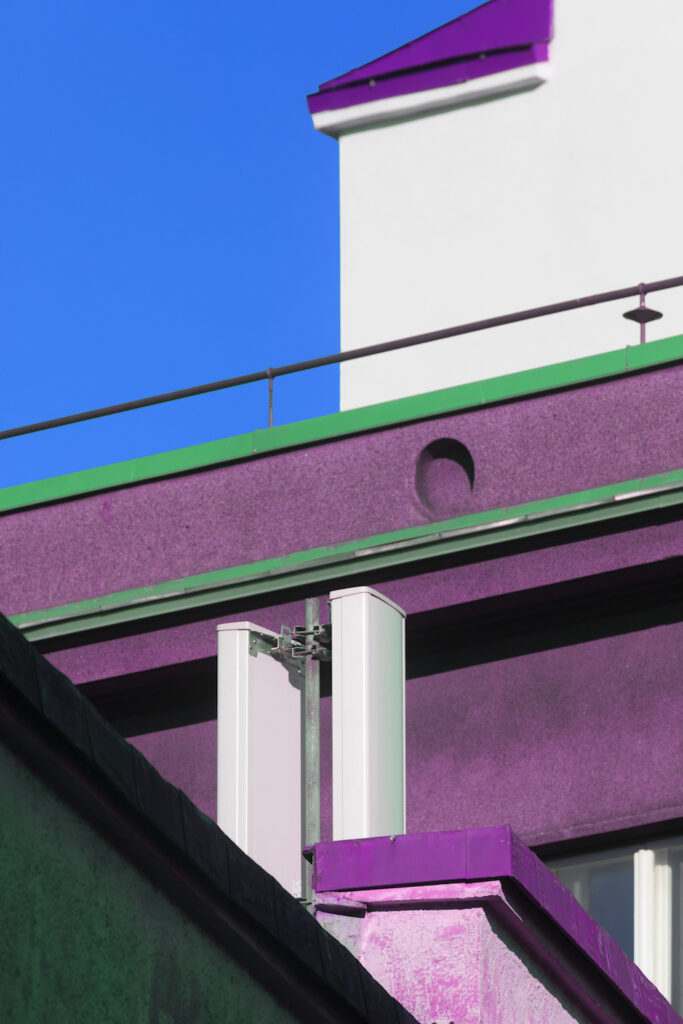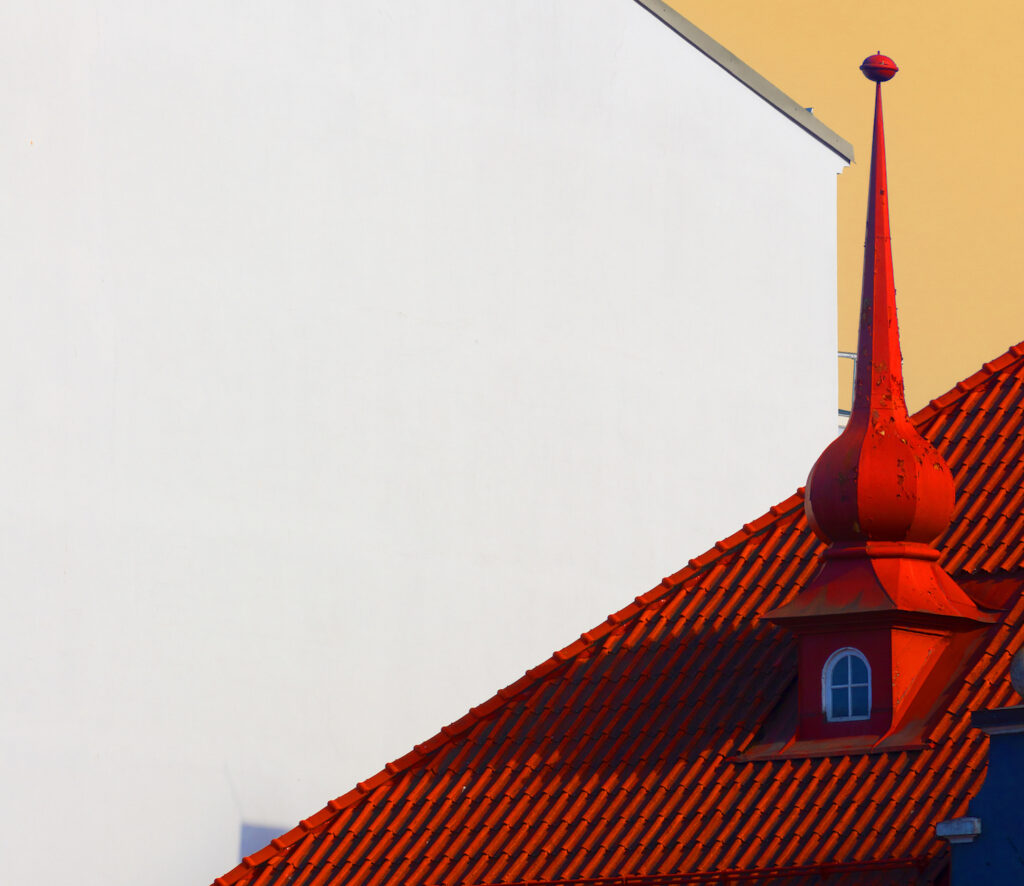In the last five years, one hot topic for experts in the field of green transition, which has been cropping up at international conferences as well as on the desks of pertinent officials, is the handling of spatial heritage.
In what follows, Helen Sooväli-Sepping will outline how spatial heritage can contribute to green transition and discuss whether green transition could also contribute in some way to cultural heritage, more specifically built heritage. Areas discussed and mentioned in the article include sustainable communities, reuse of buildings, circular economy and innovation. It is namely by promoting these areas that it is possible to see preservation and use of built heritage as a human activity that has better energy efficiency and smaller environmental footprint, thus contributing to the mitigation of climate change.
The European Green Deal,1 the purpose of which is to turn the European continent climate neutral by the year 2050, does not specifically mention historical buildings, facilities and landscapes, neither those that are protected nor those that are not. At first glance, it looks as if culture has been forgotten, and the resulting rather technocratic, technological innovation-based approach for striving towards a more sustainable Europe is somewhat puzzling. From a logical perspective, spatial heritage could be an ideal fit for the plans of a renovation wave that have been initiated by the European Commission. On a closer look, the plans indeed contain a between-the-lines message that the European Green Deal and cultural heritage are closely interconnected. Still, it has been decided that renovating cultural heritage is not a priority in this budget period, and no special funding measure has been designated for making spatial heritage more climate-proof. Souping up old buildings and making infrastructure more sustainable does not have a sufficiently immediate effect on the reduction of greenhouse gases. Hence, we are faced with a bundle of questions—is it cheaper to build a new building than to renovate an old one, and is the environmental footprint of a new building larger or smaller than that of an old one? Are buildings that adhere to modern standards more climate-smart than old ones built according to traditional construction principles and with traditional construction techniques?
Built heritage regulations as a focus of European climate policy
In the Estonian Human Development Report 2019/2020, I wrote that the greatest task of our time is to ensure that our planet remains inhabitable for generations to come. This entails adapting to climate change and reducing detrimental environmental effects.2 Spatial heritage has a central role in this. In 2021, the European Cultural Heritage Green Paper,
subtitled ‘Putting Europe’s shared heritage at the heart of the European Green Deal’, was published.3 This document, commissioned by the European Commission and compiled by various experts, delineates a conceptual framework for how cultural heritage could help with the European efforts to achieve climate neutrality. The spatial heritage green paper focuses on values. Cultural heritage, including built heritage, is a cornerstone of we-feeling and Gesamtkunstwerk, co-creation. Cultural heritage has an important role in creating and preserving values. Creation and mediation of values can take place in a citizen-centric way—through civic activity, civic science and civic engagement. The latter consist in activities that involve the whole society, which are a prerequisite for the survival of cultural heritage and application of sustainable solutions. The green paper outlines the relative importance of cultural heritage in creating a more resource-efficient and resilient society. Reuse is nothing but the transmission of heritage technology skills, and sprucing up and maintaining old buildings and objects. These sorts of skills are known as green skills—that is, knowledge that can be applied in building a more climate-proof society.
Cultural heritage is the focus of two important green deal-supporting strategies for European urban and rural regions—namely, ‘New European Bauhaus’4 and the renovation wave strategy.5 ‘New European Bauhaus’ is an initiative that contributes horizontally to all the ongoing planning, heritage building and heritage preservation activities of the green transition, bringing together the ideas of aesthetics, design and sustainability. Heritage creation is underwritten by these three ideas, and this in turn contributes to the quality of people’s living environment.
The principles put forth in the green paper and the ‘New European Bauhaus’ strategy should be implemented by the renovation wave plan—an initiative for improving the energy efficiency of buildings. In the next ten years, the European Commission wants to double the renovation rate and thereby significantly increase the energy efficiency of buildings. Numbers show that buildings make up for approximately 40% of energy consumption in the EU, and buildings and infrastructure could account for up to 36% of greenhouse gas emissions. Right now, only 1% of buildings are renovated each year to increase their energy efficiency. The European Commission finds that by the year 2030, the number of renovated buildings should reach 35 million. In Estonia, this implies renovating 140 000 buildings, and 22 million euros have been allocated for this purpose. It is hoped that the plan also has the additional value of bringing forth a wave of innovation—in the construction sector, this could consist in reuse and recycling of materials.


The future belongs to beautiful climate-proof buildings
The life expectancy of a building is measured by its life span. The life span can be understood to begin with the planning of the building and end with its demolition or disposal. In the energy balance of a building’s whole life span, approximately 20% is consumed by heating, while the other 80% is consumed by the production of materials and construction. At the same time, existing buildings already store a large amount of energy; continuing to exploit it saves natural resources, reduces waste, and, ultimately, mitigates environmental damage.
While Estonia is still going over and trying to understand the European regulations that promote greenhouse gas reduction, the Netherlands and Denmark have had national-level efforts to create solutions for reusing existing buildings already for several years. The construction sector and spatial planning in these particular countries have long focused on the conception of energy efficiency. On the one hand, this is due to their rapid urbanisation and population growth, which have led to constant worries with lack of space, but on the other hand, buildings of the requisite sort are also appreciated by both architects and real estate developers. The principle of adaptive reuse states that each form can be given a new function, and a function can be adapted to every form. This way of thinking implies a certain change in people’s aesthetic sense—a shift from a normative and orderly notion of beauty to an emancipated and creative one. When it comes to the interiors and facades of old buildings, a special challenge is posed by ventilation and solar panels. How to adapt technological infrastructure to an old building in a way that would not interfere with its heritage value? Ursula von der Leyen has emphasised that the renovation wave presents an opportunity for creating a new European aesthetic. Hopefully, this green strategy is seen as an opportunity for creatively combining old and new also by our architects and interior designers.6
So-called old new buildings that have been repurposed establish a historical layer that carries on the genius loci of the region, in stories as well as in landscape. Society and our activities are constantly changing, and this is why we get the need for buildings with new functions. Instead of tearing down liveable buildings that have lost their initial functions, they are adapted to new functions. Thus, for example, churches are turned into libraries and community centres, and artists use empty buildings temporarily for their galleries and workshops. This is the new, often grassroots-initiated cultural approach to green transition that is promoted by the aforementioned heritage-related documents.
Building reuse and built heritage design in Estonia
The notion that high-quality space requires an understanding of already existing value is also taking root in Estonia. One example would be the Rotermann Quarter in Tallinn, where the interplay of protected industrial buildings and new architecture has led to a highly appreciated and diverse urban space. Granted, they could have also used solutions for raising the quality of living environment, including nature-based solutions that increase biodiversity, such as green walls. Such solutions would have benefitted the district both in terms of quality of space and adaptation to climate change. We have had several examples of repurposing former industrial districts, but so far, the adaptive architectural solutions there have not been motivated by the changing climate, but were rather developed for temporary use or due to a desire to quickly start using the property while hoping for the growth of an organic, uncurated environment. A characteristic example of this would be Telliskivi Creative City, which has developed in accordance with market expectations, and where the adherence to the principles of circular economy has figured as an additional value.
So far, we have been talking about urbanised regions with a stable population, but let us now proceed to examine the potential of adapting old, unused buildings to new functions in rural regions or places with a declining population. Does finding a new use for historical buildings add any value to such living environments, or would it be better to increase the spatial quality of these regions with wholly new buildings? The answer to this question lies in the analysis of a building’s life span and its technical condition. A completely dilapidated building might not be worthwhile to renovate. At the same time, we also need to have a critical analysis of why there is the desire to replace an old building or to build a new one instead of using the already existing stock. Construction activities in Estonia are currently not analysed from the perspective of sustainability.
The condition of historical buildings in Estonia is at times quite bleak, especially in the rural regions. One fourth of protected building monuments alone are in a bad shape and unused. The state’s contribution to maintaining them has not been sufficient due to lack of funds.7 Some relief may be coming in the next few years from the funding measures of the renovation wave strategy, which has set public buildings as one of its priorities. Besides renovation grants, the state’s contribution to cultural heritage is also exemplified in how they administer the built heritage that belongs to themselves—around 60% of private owners of building monuments perceive that the state and municipal governments do not set a good example in taking care of monuments, given that they often prefer new buildings to renovating.8 The 2016 study ‘Management of state-owned culturally valuable buildings’9 concluded that we need a policy for state-owned real estate that would set broader goals than simply managing as affordably as possible.


The backbone of spatial planning in rural areas should be sustainable regional development. In order to support regional development with high spatial quality and heritage conservation, we need to have more deliberation on individual spatial decisions and targeted subsidies for revitalising historical centres. Reconstructing old buildings and adapting them to modern circumstances is precisely the way to create exciting public spaces with new functions. Objects that are waiting for investments include the buildings of Viskoosa fish factory in Hiiumaa, which have been turned into a concert venue, and the Kreenholm Manufacturing Company ensemble in Narva that hosts opera festivals and summertime theatre performances. There are hundreds of such building complexes in Estonia. What will become of them? Currently, the state has no plan for managing them.
Striving for climate neutrality does not necessarily imply building new buildings in declining cities and rural regions. More than half of Estonia is without inhabitants, and mere new buildings do not suffice to bring people to a region.10 At the same time, construction cranes and rising buildings are part of the success myth—it is as if they signalled the aspirations of cities and their capacity to attract investments to the region. How many new buildings are we building, and why do we build them in the first place? Due to our sparse population, the belief that we can afford new buildings with large volumes is widespread. Our use of land is profusely wasteful.
We can often acknowledge that old buildings in smaller towns or settlements are not, so to speak, well-placed—this is evidenced by underused or unused train stations, municipal buildings, schoolhouses, outpatient clinics and dairies. In terms of buildings that belong to municipal governments, we could follow the example of the Dutch and foster close collaborations between municipalities and spatial design experts (planners, architects, interior architects) in order to ascertain the kinds of spatial qualities that are desired in a particular town, and how to develop the urban space or environment as a whole while taking into account the locations of empty buildings. Hence, here we have a recipe for creating living environments with comprehensive architectural conceptions and functionalities that connects the general plan, development plan and long-term budget strategy of the municipality. In addition, building an inspiring narrative that addresses climate change around the notion of spatial reuse would also help. This entails intertwining different historical layers and exhibiting them conspicuously. A third tip from the Dutch experts would be to involve local residents already in the early stage of planning. Public support and collaboration are important for successful implementation of spatial plans.
Given the context of rapid urbanisation, there are not enough residents in Estonia to go round, even if we were all multi-local and lived in two homes—in apartments as well as country-houses. Furthermore, we do not have many heritage and spatial design experts outside a couple of larger cities. Since we are dealing with a systemic, nation-wide issue, the solution would be nation-wide coordination. Thus, we can only acknowledge that managing regional development is complex and location-specific, requires an interdisciplinary approach, and achieves success in places where the community and municipal government agree on the details of spatial development and are mutually supportive.
Although European strategic documents on green transition do not consider the renovation of buildings that belong to cultural heritage in some way or other a noteworthy activity in terms of reducing environmental damage, the owners of protected buildings are currently obligated to maintain them due to the Heritage Conservation Act. It is possible that by changing the emphasis of heritage protection and refocusing it on adapting to climate change, we could give the owners of built heritage an additional reason for taking care of their objects.

HELEN SOOVÄLI-SEPPING is Vice-Rector for Green Transition at the Tallinn University of Technology
PHOTOS by Martin Siplane. Abstract city.
PUBLISHED: Maja 109-110 (summer-autumn 2022) with main topic Built Heritage and Modern Time
1 ‘European Green Deal’, https://ec.europa.eu/info/strategy/priorities-2019-2024/european-green-deal_en
2 Helen Sooväli-Sepping (2019). Inimarengu aruanne 2019/2020 (Eesti Koostöö Kogu)
3 Andrew Potts, ‘European Cultural Heritage Green Paper’, Europa Nostra, https://issuu.com/europanostra/docs/20210322-european_cultural_heritage_green_paper_fu.
4 ‘Euroopa Uus Bauhaus’, https://www.kul.ee/uudised/euroopa-uus-bauhaus-mis-see.
5 ‘Renoveerimislaine’, https://www.mkm.ee/ehitus-ja-elamumajandus/elamud-ja-hooned/renoveerimislaine.
6 ‘Euroopa Komisjon avaldas renoveerimislaine strateegia hoonete energiatõhususe parandamiseks’,
https://bioneer.ee/euroopa-komisjon-avaldas-renoveerimislaine-strateegia-hoonete-energiat%C3%B5hususe-parandamiseks
7 Triin Talk & Siim Raie, ‘Ehituspärand ja ruumikvaliteet’, in Eesti inimarengu aruanne 2019/2020 (Eesti Koostöö Kogu, 2019).
8 Külliki Tafel-Viia et al., Eraomandis oleva kinnismälestise hoidmine. Uuringu lõpparuanne (Tallinn: Tallinna Ülikooli Eesti Tuleviku-uuringute Instituut, Eesti Kunstiakadeemia muinsuskaitse ja konserveerimise osakond, 2014)
9 Maris Mändel et al., Riigi omanduses olevate kultuuriväärtuslike ehitiste haldamine. Uuringu lõpparuanne (Tallinn: Eesti Kunstiakadeemia muinsuskaitse ja konserveerimise osakond, Tallinna Ülikooli Ühiskonnateaduste Instituut, 2016)
10 Helen Sooväli-Sepping, Eesti inimarengu aruanne 2019/2020 (Eesti Koostöö Kogu, 2019).





